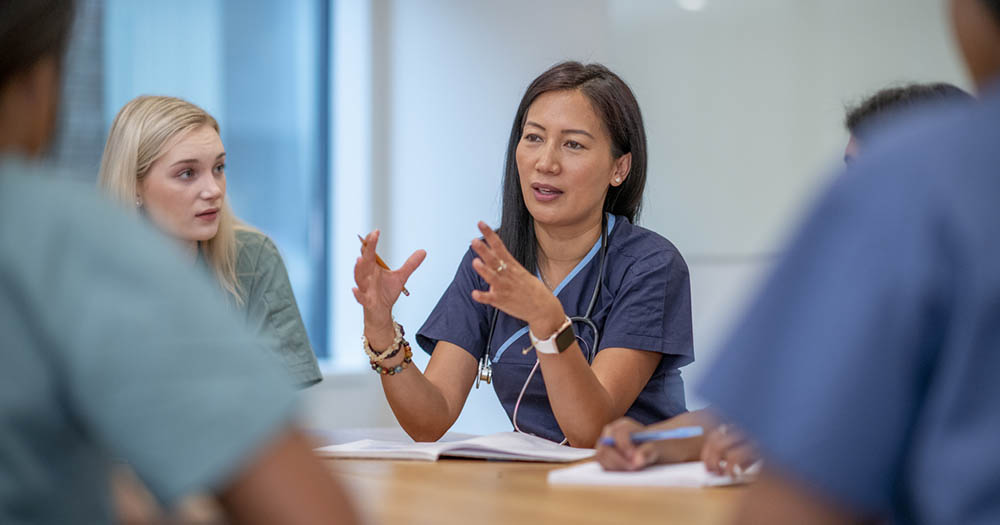It is over 90 years since the discovery of insulin – one of the greatest medical discoveries ever; people with only days to live were saved as long as they took their insulin (Rosenfeld, 2002). How ironic, therefore, that in 2010 the National Patient Safety Agency (NPSA) had to issue an alert about insulin safety to all healthcare professionals (HCPs); it is not the insulin that is at fault, but those who prescribe, dispense, handle or administer it to individuals with diabetes (NPSA, 2010).
Self-administration of insulin is an integral component of self-management for people with type 1 diabetes, as well as for a growing percentage of people with type 2 diabetes and other subtypes; however, not all people who require insulin are competent to self-inject. This latter cohort of people will therefore be reliant on others to administer their insulin, such as district nurses, ward staff or specially trained carers (Huehns, 2011).
Following a reporting of over 16 000 incidents that included several deaths and serious harm between 2004 and 2009 (NPSA, 2010), the NPSA analysed the incidents and identified wrong insulin type, wrong insulin dose and delayed or omitted insulin dose as representing 60% of the problem areas. It is also important to note that this number is probably a serious underestimation of incidents, as reporting was not as rigorously encouraged and enforced as it is today. The NPSA then issued a “Rapid Response Report” (NPSA, 2010), outlining a number of key recommendations on staff training, safe prescribing and administration. It developed a plan to work with pharmacists, people with diabetes and other groups on producing a patient information leaflet (PIL) and an insulin passport for all adults treated with insulin aged over 18 years (NPSA, 2011a).
Development of the insulin passport
The NPSA’s insulin passport consists of two sides of A4, which can fold into the size of a credit card and has the facility for updating the individual’s medications and altering insulin dosages. The NPSA directed that the PIL must highlight some key areas, such as the likely errors that can be made, details of concurrent medication (this could be page B of the prescription) and information on treatment of hypoglycaemia (Bannister, 2011); the PIL has only to be given once (with page B of the prescription). Raising individuals’ awareness of possible mistakes is important, as they may have become complacent when receiving other medications in different packaging and may have been told “not to worry” when they questioned if their prescriptions were correct.
All health organisations including primary care were advised to have mechanisms in place by 31 August 2012 to assist with the implementation of the insulin passport. It all seemed straightforward – the NPSA thought it was great in theory, but was it practical?
Concerns
From the beginning there were concerns from nursing, medical and pharmacy groups, including the Diabetes Nurse Consultant group, the Association of British Clinical Diabetologists, NHS Diabetes and Diabetes UK on the content of the PIL, as it contained prescribing name inaccuracies. Clarity was sought on who would be responsible for updating dose titrations and other amendments, and whether if individuals continued to carry redundant insulin passports, would this increase clinical risk and if so what were the accountability implications? In fact, it was feared that insulin passports could actually increase risks overall, as different patient information systems exist in primary care, community and acute trusts. Any changes made to insulin type or dosage in one setting may not be immediately available to HCPs in another, unless the individual is fully engaged in the process. Additionally, what is the likelihood of the recidivist patients, elderly, mentally unwell and those in care homes having the correct card in their possession?
It became clearer as time went on that the NPSA appeared to have underestimated the scale of the challenge they were undertaking, for example comparing the implementation of insulin passports to the cards carried so successfully by individuals on warfarin or lithium.
Way forward
Insulin is different to many other medications because of its multiplicity of formulations, similar sounding names, varied regimens, varied equipment for administration, frequently changing dosages, timings of administration in relation to meals, and whether it is combined with or without oral diabetes medications. The NPSA, though resistant to change initially, did meet with key people in diabetes care and agreed that healthcare organisations do not have to use their rather “wordy” information leaflet or their insulin passport (NPSA, 2011b). The NPSA agreed a number of amendments, including allowing all health organisations to use a bespoke leaflet from their own organisation or the leaflet produced by June James at Leicester; additionally, the NPSA also allowed clinicians to use the “insulin safety cards” produced by the pharmaceutical industry as they clearly show the name of the insulin on the front and rear of the card, the individual’s NHS number and also include a picture of the insulin delivery device.
Challenges in roll-out
Like Marmite, the insulin passports were either hated or loved! The NPSA conceded a few small amendments as above, but otherwise implementation would go ahead. Usually the Primary Care Trusts (PCTs), through various prescribing incentives, can smooth initiatives like this with GPs, but as Clinical Commissioning Groups have taken over the helm from PCTs from 1 April this year and roles and responsibilities are not yet clarified, commitment to implementation is at risk. Additionally, the disbanding of the NPSA last year, 4 months before the deadline for implementation of the insulin passport and PIL, was an added complication. Although we know this will become the responsibility of the new NHS Commissioning Board Special Health Authority and will be included in “domain 5 – safety” (NHS England, 2013), we have little other detail. Even more worrying is that NHS Diabetes, who have led some innovative changes in diabetes practice, has ceased to exist from 31 March this year.
We separately represent a large London NHS Trust – Barts Health NHS Trust – and a large community trust – Hertfordshire Community NHS Trust. Implementation in both areas is being managed fairly similarly, and we understand is typical across the country.
It has been agreed that the responsibility for distributing the PIL and the appropriate passport for all new insulin initiations and changes in insulin will largely fall to DSNs and those practice nurses and GPs who initiate insulin. For inpatients started on insulin by medical teams, the responsibilities need to be clarified; for people already on insulin, the three main insulin companies have sent general practices a template to complete on how many people they have on the different insulins, and then they deliver an appropriate number of correct cards. Patient confidentiality is protected as NHS numbers only are used. Some practices have got on with this as a “must do”, while larger practices say they simply have not got the resources to do this without extra funding.
Conclusion
While most of the recommendations from the Patient Safety Alert (NPSA, 2011a), including education of staff in insulin management and recommended or mandatory e-learning insulin modules for junior medical staff, were sound and indeed long overdue, the insulin passport as designed by the NPSA is perhaps the most challenging part to implement. Thus the big question is, is the NPSA Patient Safety Alert being acted upon? Only a few weeks ago, e-mails were flying around from confused nurses asking each other what should be given to the individual with diabetes.
This responsibility will undoubtedly largely fall to the practice nurses and will unlikely be embraced by all until it becomes a Quality and Outcomes Framework indicator; on the other hand, more leverage may come from the Care Quality Commission, which will begin auditing primary care from May this year. However, patient safety is a priority for all of us, and whatever the difficulties and workload this initiative creates, we must all ensure we drive this forward in a positive way.
The authors would be interested to hear from colleagues who are in the process of implementation or may be have completed implementation of the insulin passports, and how they are auditing this across systems. The authors’ emails are [email protected] and [email protected].





Key scientific developments presented at the conference.
6 Aug 2025